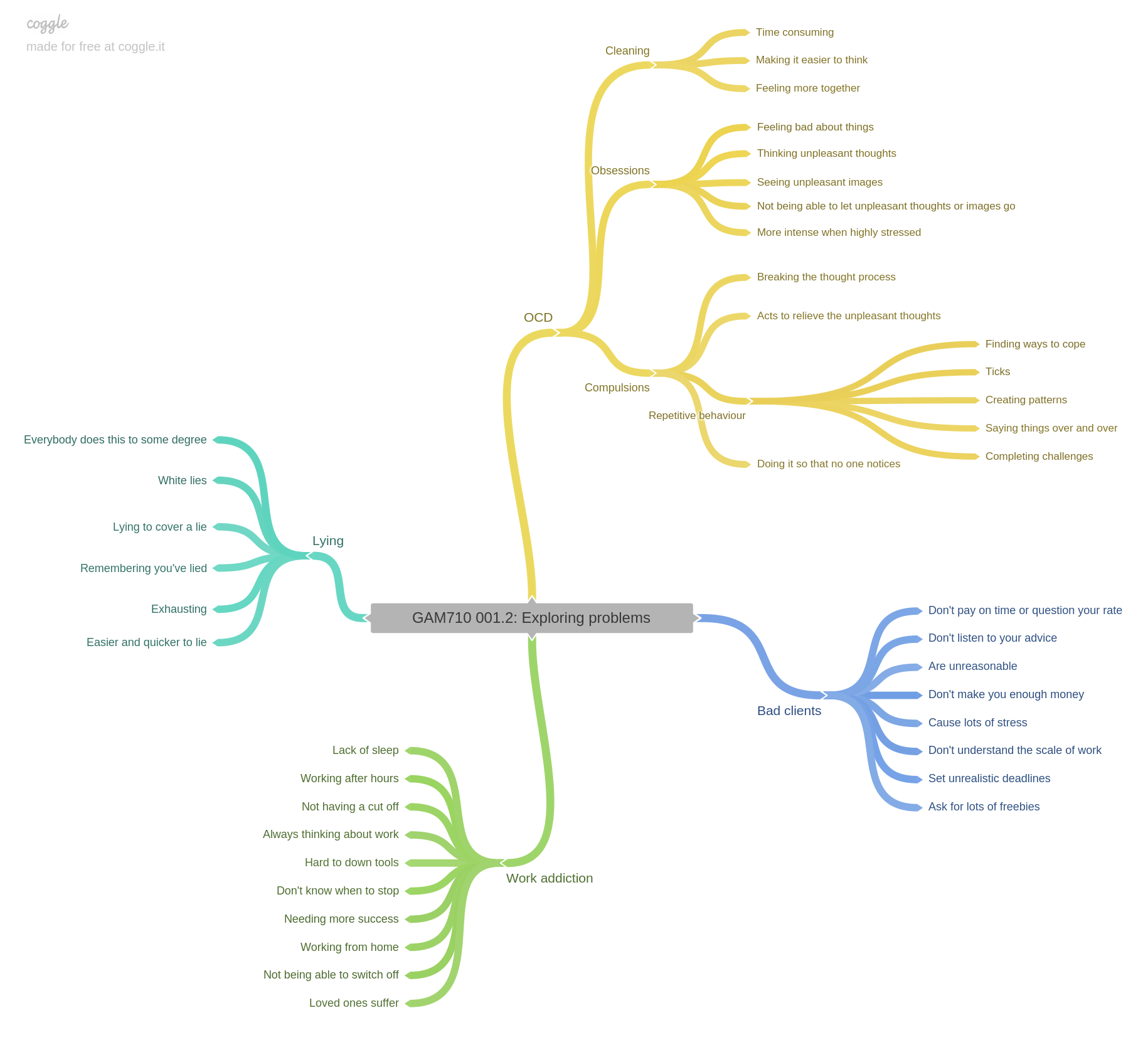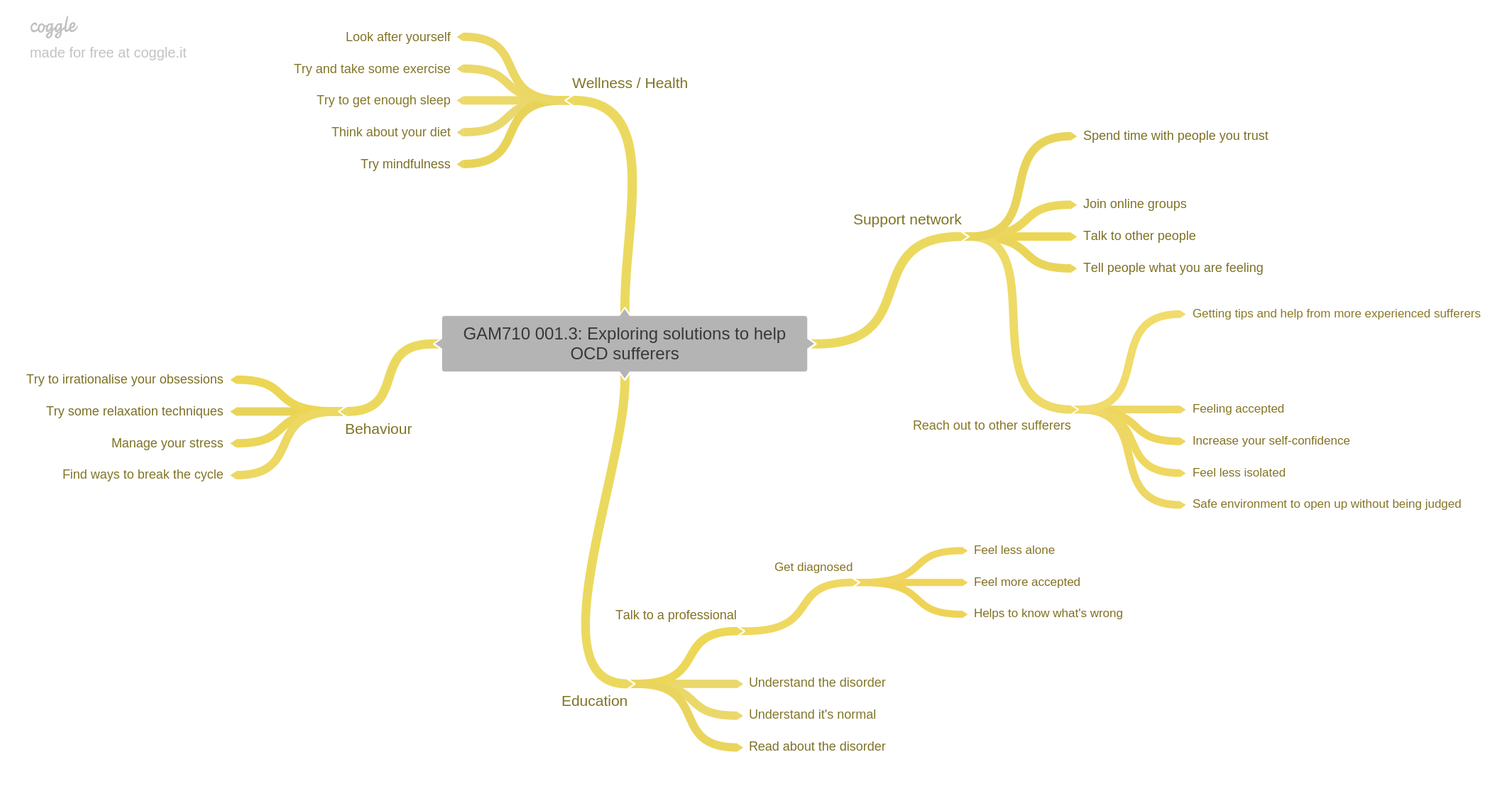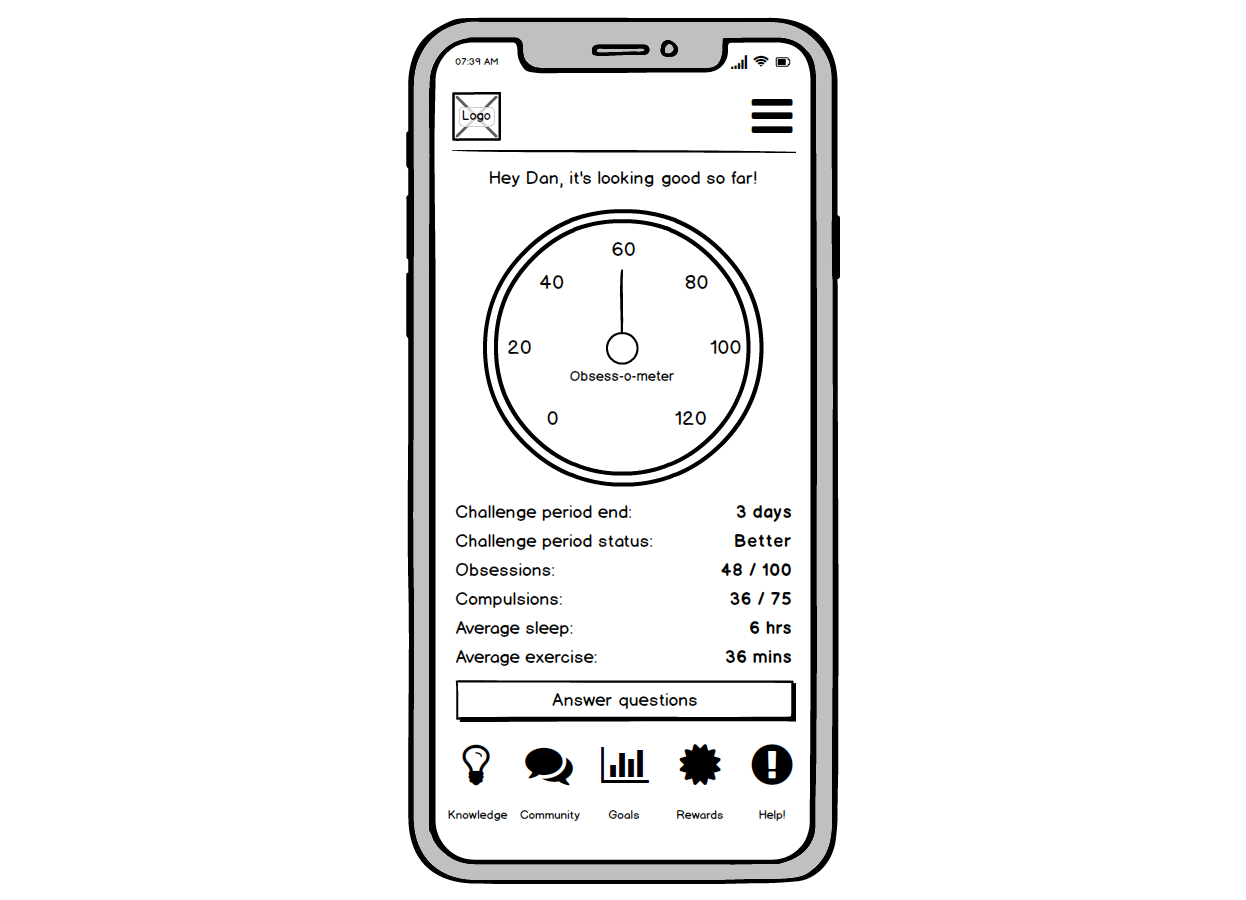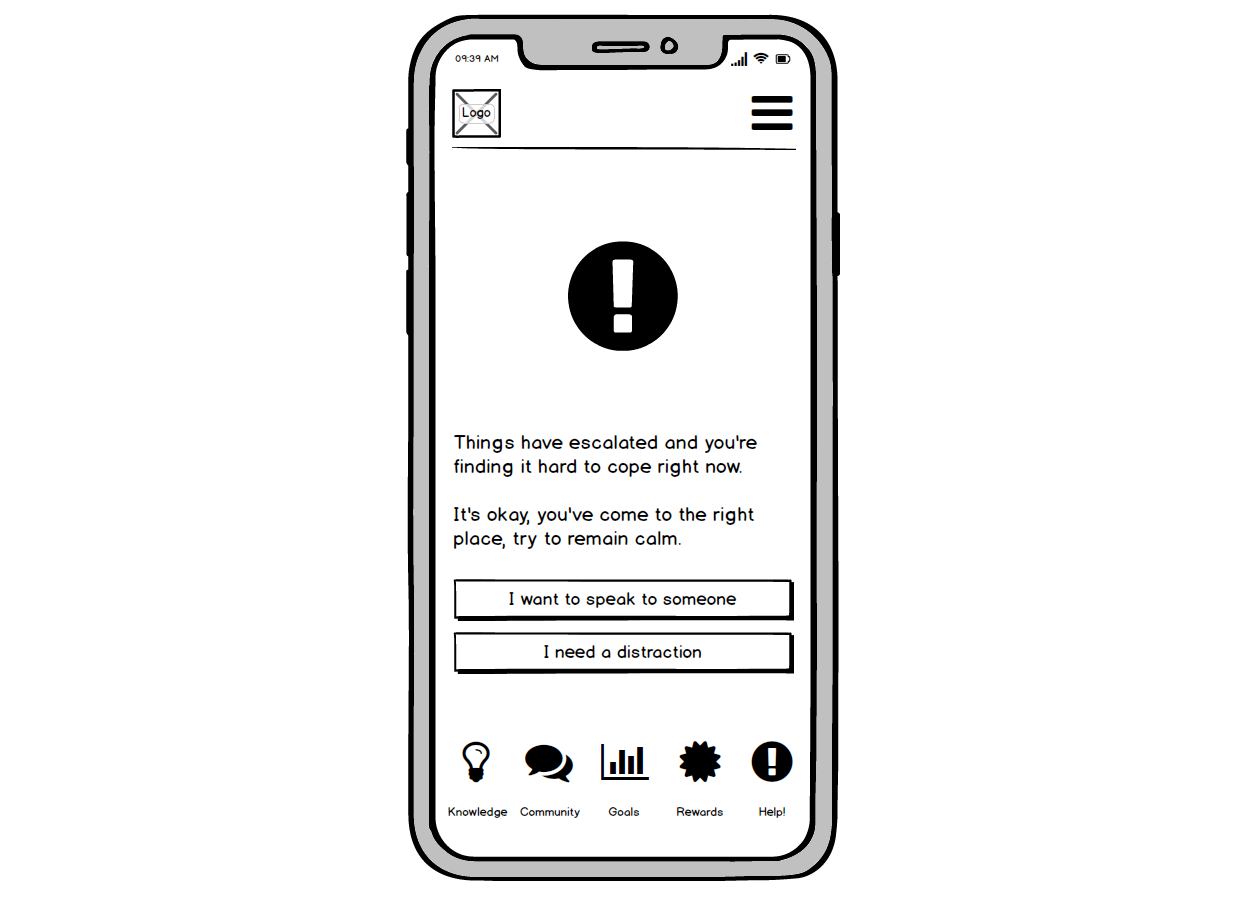The creative piece
The brief
This is a creative task, and one that involves rapid ideation to present an idea for a new concept of an application on the forum.
The requirement is to explore ideas about what the application could be, then describe the application, illustrate it and provide sufficient detail.
The following techniques were mentioned and should be included to demonstrate the idea and my thinking: Mind maps, rough drawings, diagrams & mock ups.
Finally there is a constraint. The application needs to be based around a theme and this is the idea that As long as we have each other we will never run out of problems.
Note: It was mentioned that this was the theme for the Global Game JAM in 2009
Understanding the brief
I feel that this task is about allowing myself to think and not procrastinate for too long, but instead to open my mind to new ideas and in the process (hopefully) uncover something of value - An idea that could have a place in today’s landscape.
In the introduction video there is mention about the small number of ideas that are ‘actualised’ and then the even smaller number that are ‘successful’. This leads me to believe that this task is about quickly identifying ideas, but just as quickly discounting these ideas if there is felt to be no place in the market for such an application.
To be successful in this task I will need to work ‘rapidly’ and allow myself to be creative without letting too many constraints stifle my thinking. I will need to time box each component and know when to stop in order to get the most value from the entire process and not fall short.
My approach
In order to be successful with any task you need some appropriate level of structure and management. Clearly defining how I can break apart the task and then time boxing each element will enable me to move through the task from beginning to end without getting lost within the task and procrastinating to such a degree that the task does not get completed.
Here is the structure I’ve outlined to keep myself on track:
Identify problems
I will brainstorm anything that springs to mind with relation to the other mention in the theme, where the other could be considered as another person or something completely different. I will create a mind map and create a new branch for each interpretation of this and then I will identify the problems that each of these interpretations creates.
Break out the bigger issues
I will pick the strongest from each interpretation in order to get a broader diversity in the subject matter. I will then focus on each of these problems and expand them in greater detail to get a better picture of which problem is the most apparent.
Select the biggest problem
First I will use common sense to discount any problems that are not really that prominent. I will then quickly use statistics to illustrate the problem that is the most wide spread and the one that is most in need of a solution. I will select this problem for the development phase.
Developing my solution
I will demonstrate my solution by way of rough sketched wire frames. To illustrate the function of the application I will walk through one or two key user journey’s. If I get time I will also look at creating a sketched logo to give it come personality and demonstrate my understanding of how this would be executed in order to suit the target market and how this would drive the design language in the application.
The solution
Identifying problems
This mind map illustrates my brainstorm of ideas that arose from the central theme As long as we have each other we will never run out of problems. I time boxed this task to two hours. I first choose the topics that could represent the other in the theme and then explored the problems that these topics create.
In some areas the problems are quite personal to me, I didn’t set out to achieve this, it’s just the way it happened - If there were more people involved in the task there would likely be more varied topics and thus more varied problems.

Breaking out the bigger issues
This mind map illustrates my exploration into four of the more prominent problems. As intended I selected one problem from each of the topics where the other was either a person, an addiction, a vice or an illness. I discounted selecting a problem from the behaviours topic as I felt that this didn’t yield anything worth exploring in the initial brainstorm.

Selecting the biggest problem
I discounted Lying quite quickly, I just wasn’t interested in the subject matter and it wasn’t a personal issue so I didn’t feel like I understood the problem well enough or had enough context of the issue to even consider creating a viable solution. I think I also realised that lying is perhaps a cause or effect of another greater problem and if I were to create an application it’s probably that problem I should be focused on and not the effect.
I thought that bad clients was quite an interesting one to consider, I imagined I could devise a quirky utilitarian application, a fun quiz to help you wean out existing bad clients and how to deal with them and what to look out for in the first place to steer clear of them. However, all this said, in the end, though the problem was quite close to me and there would likely be a large audience I just wasn’t that excited about the subject matter. I felt much the same about work addiction so I discredited this also.
This brings me onto the OCD topic. This is a topic that is quite close to me having battled with the issue myself since I was much younger and knowing full well that there isn’t a lot out there in the modern world to help people (specifically children) who have OCD to first identify that they have the disorder and then to find relevant and modern ways to improve their lives.
There is a lot of educational content out there but not much of a strong offering from an application point of view. There were a few applications on the App Store but these had very limited downloads. I did find a post on one application called Live OCD Free that sets out to find a more creative approach aimed at both adults and children to solving the problem, however when I found this on the App Store it was far from Free and was actually priced at £28.99 with no download or rating information available. The execution of this application is also very poor, so based on this and the extortionately high price, as a competitor this application is not much of a contender.
To gauge the audience I looked around on the internet and found the following statistics:
Around three quarters of a million people are thought to be living with severe, life impacting and debilitating Obsessive-Compulsive Disorder (OCD) here in the UK.
- Statistic taken from OCD UK.
OCD affects 2.2 million adults, or 1.0% of the U.S. population… One-third of affected adults first experienced symptoms in childhood.
- Statistic taken from Anxiety and Depression Association of America.
In summary, based on the reasonable audience size and the sub standard offering of applications on the market already, coupled with the fact that this is an application which confronts mental illness (which is a very current topic), I feel that there is some potential for investigation into building a solution. The lack of applications available means that as well as having an audience the market place is quite open for a better solution.
Developing my solution
My first step was to use both my personal experience coupled with research to construct a mind map of potential ways in which OCD sufferers can improve their situation and live with their disorder. I time boxed this exercise to one hour.

The map can be split into four main topics that comprise an overall solution for coping with OCD:
- Educating yourself about the disorder
- Understanding what can help or hinder your disorder
- Altering your lifestyle to lessen the obsessions and make the compulsions less necessary
- Finding people that you trust and can talk to about your disorder
There is one thing not mentioned in the map, and that is despite doing all of the above and doing everything you can to live with OCD, there will be times when the obsessions take over and sufferers need to find ways to cope that can replace the need for exercising compulsions. This is a much more complicated requirement of the application but I want to try and offer a solution so I will be adding a fifth item to the above list:
- Educating yourself about the disorder
- Understanding what can help or hinder your disorder
- Altering your lifestyle to lessen the obsessions and make the compulsions less necessary
- Finding people that you trust and can talk to about your disorder
- Having the tools to deal with an active obsession with little disruption to your routine
I’ve taken the above five themes to construct the general idea for the application; Based on the fact that coping with OCD is all about altering your lifestyle to help the disorder, I want to propose an application based loosely on those like Fitbit - fitness products that help the user stay motivated and improve their health by tracking their activity, exercise, food, weight and sleep.
My idea is that the application will help OCD sufferers to cope with their disorder by first identifying how severe their disorder is and then giving them weekly goals to work to and the tools to utilise in order to achieve these. At the end of each day the application will prompt the user to answer a few quick questions about their diet, exercise, sleep, obsessions and compulsions. And at the end of each week their progress will be used to update their score and curate a bespoke plan and goals for the week commencing.
The main taxonomy for the application which will be:
- Knowledge: This is where users will educate themselves about OCD and understand what can help or hinder their disorder.
- Community: This is where users will be able to engage with other sufferers and talk to about their disorder.
- Goals: This is where the user will be able to see their current score and their progress week by week.
- Rewards: This is where the user will be able to see when they were successful in achieving their weekly goals.
- Help!: This is where users can get immediate access to help if they are overwhelmed by an obsession.
To demonstrate the application I am going to outline some of the key screens and walk through some of the user journey’s:
Home screen

After completing on-boarding or logging into an existing account the user will arrive on the home screen, this acts as a dashboard for the user and displays an overview of their account including:
- Notifications overview: The notifications overview at the top shows the last unread notification that the user received. This area defaults to show the How are you feeling today question when the user has no notifications to show. Clicking the thumb down will open the Help Screen.
- Challenge overview: The challenge overview shows the user a snapshot of their current weekly challenge, this includes their current score portrayed by the obsess-o-meter, how long they have left and their progress summary based on their goals.
Goals screen

The goals screen shows the user more detailed statistics about their current challenge period, there is a quick link at the foot of the goals screen to answer the daily questions to update their progress.
Questions screen

The questions screen shows a short series of questions designed to gauge how severe the users suffering has been during the day and acquire the data required to score the user and make relevant recommendations for improvement. The user may arrive here on demand by clicking a link from within the application or by clicking on a daily push notification sent at the end of each day (the time to receive this is preset by the user).
Though it is sensible to answer the questions only once and at the end of the day, users can answer the questions as many times as they like and every answer will nullify the last answer given for the same question on that day.
If the user does not answer their questions on a certain day then the application will treat this day as if it did not exist, thus having no bearing on the users score or the following week’s goals. Every day’s activity can be viewed on the Rewards Screen so the user can answer questions for a day they have missed as long as it is within the current challenge period.
Help screen

The help screen offers the user assistance when the obsessions take over and sufferers need to find ways to cope that can replace the need for exercising compulsions. The user is presented with two options:
- Speak to someone: Research shows that talking to someone can reduce the severity of an obsession, talking about what you are feeling will get it off your chest and help you to move past the moment. Choosing this option will open an anonymous community chat window where the user can openly talk about their experience and get advice from other online sufferers.
- Get a distraction: Distractions are designed to replace compulsions. OCD sufferers feel that they need to exercise compulsive behaviour in order to suppress an obsession. The behaviour can sometimes be quite apparent, time consuming and if performed in public it can be quite embarrassing. There will be multiple distractions built into the application, an example might be a memory game that gets increasingly harder.
Summary
In this post I’ve quickly identified various ideas based around the theme, I’ve then gone on to discount ideas and select the stronger problems raised. Using common sense and statistics to back up my judgement, I’ve identified the problem which is the most wide spread and is likely to have the most market value. Finally I’ve devised a potential solution for the problem and presented this with wire frames (mock ups).
What’s next?…
There is potential for this application to be successful and thus scope to further the idea. I’ve briefly validated the need for an application of this nature and proven the size of the market place but there is far more in-depth research required into whether OCD sufferers would actually use any application let alone this one.
The solution I currently proposed needs a lot more validation before it could be actualised. For one I would need to research the different experiences that people have with the disorder to better understand the range of compulsions and the tools sufferers have already developed to better construct the content in the Help! section in order to accommodate a wider range of sufferers.
Even before any more research and development begins, I would need to prove some value proposition - It’s all well and good helping people and if I can create something that betters peoples lives that is a huge positive but the application will need to be funded; who would invest (the government?) and could this application actually be taken past point of actualisation to being successful?
From a medical point of view, I would need to consult with a professional in the field of OCD to ensure that the application I create would have medical merit and that the content did align with accepted practices for treating sufferers, and more importantly that none of the content was misleading or that the application could do more harm than good.
Finally, just from a practical point of view, I would need to create an investment pitch deck to present the idea in a more compelling way and to take the idea to potential investors.
References
In alphabetical order: